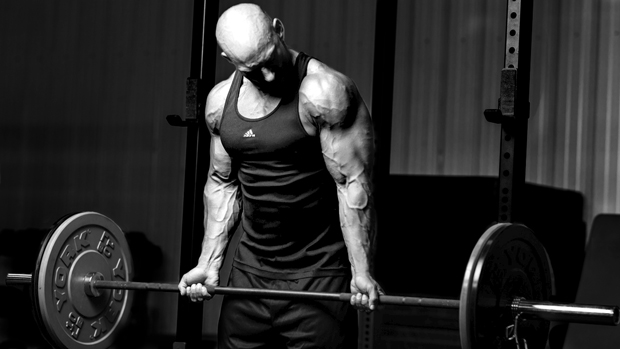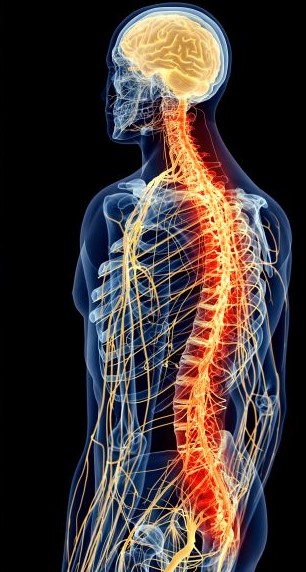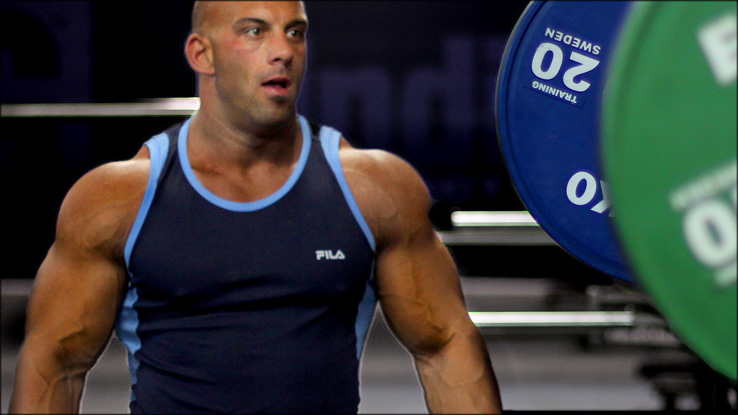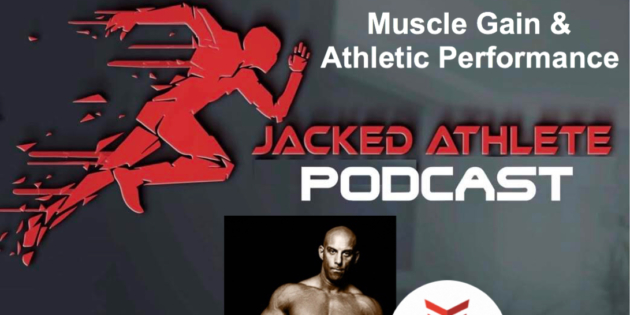http://directory.libsyn.com/episode/index/id/14190929
“Most people who train naturally will never develop the amount of muscle mass that can actually make them slower from a pennation angle standpoint.”
“If you want to be more explosive, stronger, more agile, but you want to be more muscular. You need to take out that metabolic aspect… the type of training that will not contribute to getting you stronger and more powerful.”
Reps for Hypertrophy:

- “I want to impose as much mechanical loading on as many muscle fibers as possible on each rep.”
- “What you want is to have as many bridges form as possible when you do the eccentric.”
- “The concentric’s purpose is not to trigger hypertrophy.”
- “The concentric’s purpose is to create those bridges.”
- “During the eccentric, which is where you stimulate growth, you want as many bridges as possible while you are stretching that fiber.”
- “When you are shooting for maximum growth, you need to do a controlled eccentric.”
- Momentum from an explosive concentric: “At the end of your concentric, because you accelerated, you actually have less bridges form at the top.”
- “When I want maximum growth, I don’t want to explode during the concentric. I want smooth force… I’m still pushing as hard as I can, I’m just not trying to create momentum.”
- Training for hypertrophy: controlled eccentrics and smooth force application concentric
- Training for power and strength: faster eccentrics and maximal acceleration during the concentric
Accomodating resistance:
- “The problem with chains or bands is that they reverse the strength curve.”
- “The easy part is the bottom and the hard part is the top.”
- “Every time you change the strength curve, you’re asking for injuries.”
- “It strengthens mostly the strong part. It doesn’t strengthen the weak part.”
Why Hypertrophy Decreases Performance:
“The type of fatigue that decreases performance. It’s never the muscles themselves not recovering.”
“90% of what we call chronic fatigue or any type of fatigue that decreases strength and power performance and speed performance is due to one thing… a desensitization or downregulation of the beta adrenergic receptors.”
Not responding well to adrenaline:
- Muscle: “They’re weaker, they lose speed of contraction, they lose intramuscular coordination.”
- Brain: “You lose motivation, you lose drive, you lose aggressiveness, you lose competitiveness.”
- Heart: “You lose the capacity to increase heart rate and heart contraction, so you lose endurance.”
“The main trigger for adrenaline in the body is cortisol.”
“The two main variables that will increase cortisol in training are volume (how much work you’re doing) and intensiveness (how hard you’re pushing your sets).”
“Anything that gets you worried will increase cortisol, in training or in life.”

Six variables that can lead to a desensitization of the beta adrenergic receptors:
- Volume
- Intensiveness
- Psychological stress
- Neurological demands
- Density
- Competitiveness in Training
“What we call CNS Fatigue, which is really not a thing, it’s really peripheral neurological fatigue, it’s really a desensitization of the receptors.”
“So when I want an athlete to get faster, I want to minimize any training variable that will increase adrenaline without contributing to making him faster.”
Maintaining Muscle In-Season:

“Muscle damage is highly dependent on the level of intramuscular coordination.”
“It’s really not hard to maintain muscle mass in-season. You need one stimulus.”
Stability and Body Rigidity Training:


“To sprint fast, to jump high, you don’t want your body to be a baseball bat, you want your body to be a whip.”
Isometrics for Hypertrophy:
“When used in combination with regular lifting done at the end, for example, it will work.” You need lactate from deprivation of oxygen, leads to IGF-1 or growth factor release causing some hypertrophy. Not as good as regular training. “You need to be under load for at least 30ish seconds.”
Isometrics and bands can be done every day (very little muscle damage): “If you wanna bring your shoulders up, you could do lateral raises with bands everyday, you will recover from that no problem.”
Pump or ISOs 24-hours after training a bodypart: “If I’m not causing muscle damage, I’m lengthening that anabolic period without having more damage to repair, so now I have more time to actually add tissue.”
Website: https://thibarmy.com/
Instagram: https://www.instagram.com/thibarmy/?hl=en



